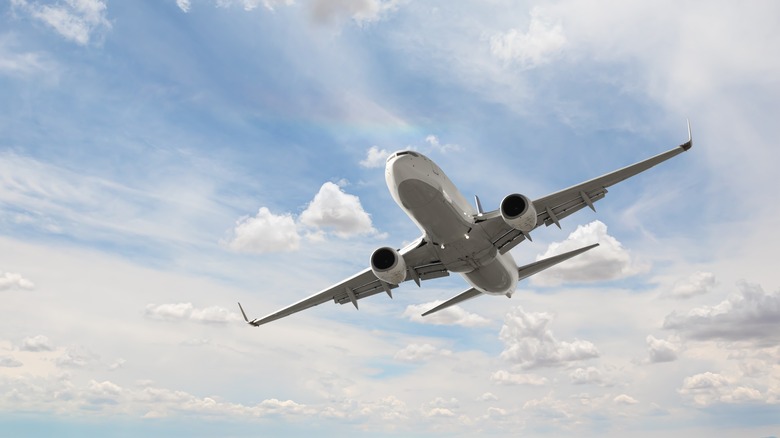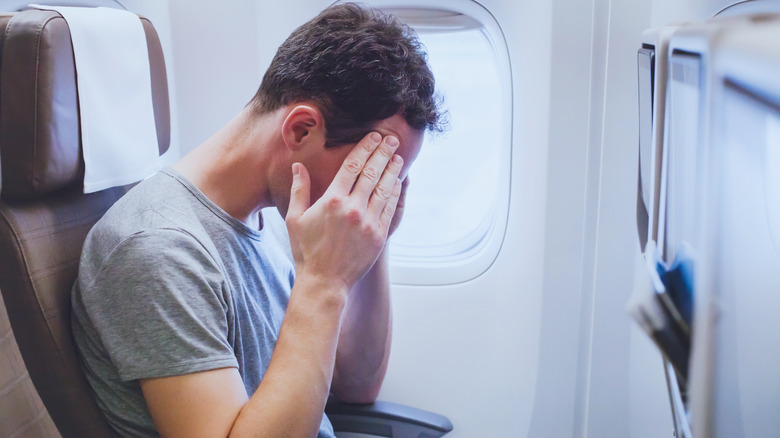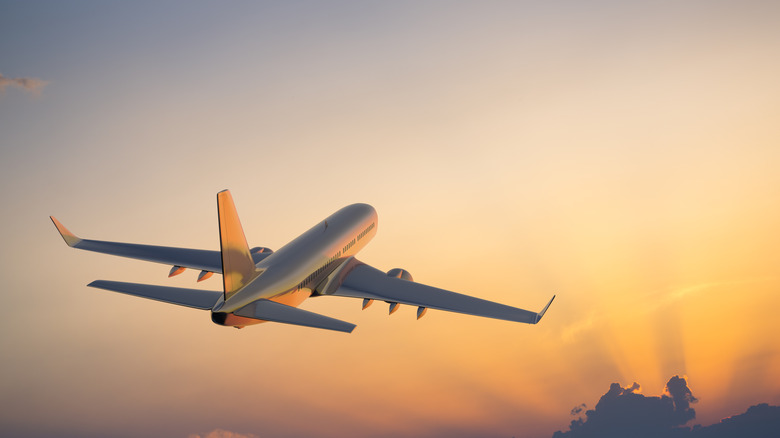How Climate Change Is Impacting Air Travel And Making Turbulence Worse
If you hate turbulence, we don't have great news for you. With climate change, weather is becoming more extreme, and in some cases, this creates more turbulence on flights. It's not necessarily a simple link, though. As the planet gets warmer, weather patterns are changing. For one, the hotter it gets, the higher likelihood for thunderstorms, especially if you're flying over the Pacific Ocean. While planes can fly over thunderstorms safely, the difficulties lie in taking off and landing, leading to delays and disruptions. And even though flights are safe to travel over storms, that doesn't mean the plane won't feel it. There's significant blowoff from storms, creating a bumpier ride in the larger vicinity of the storm.
While turbulence is less of a big deal than it feels like, the rough air can be a safety hazard for passengers and flight attendants. In March 2023, a Lufthansa flight departed from Texas for Germany and had to make an emergency landing in Washington-Dulles International Airport after seven passengers needed to be hospitalized because of the severity of the turbulence they experienced. While these cases are rare, there could be an increase in turbulence because of our changing climate.
Why turbulence is becoming worse
There are different causes of turbulence. One of the most common causes for turbulence, called mechanical turbulence, comes from air passing over various structures, such as buildings, hills, and mountains. This kind of turbulence, obviously, has nothing to do with climate change. However, other causes for turbulence, like clear air turbulence, has become an increasing problem. Like it sounds, clear air turbulence comes even when skies are cloudless. Paul Williams, a professor of atmospheric science at the University of Reading in England, told NPR that this is caused by wind shear, which is a sudden change in the direction or speed of the wind, even when there's no trace of a storm.
"Since satellites began observing in 1979, the amount of wind shear has grown by 15% in the jet stream," Williams explained, citing one of his studies. Since wind shear is invisible, it can be especially difficult during takeoff and landing, when unexpected changes in wind speed or direction can force a pilot to switch to emergency recovery mode. Just a word of comfort to any anxious fliers out there: Pilots are expertly trained in recovery modes and have backup contingencies for these kinds of things. They will often go around again, or even divert to another airport to land safely, if necessary.
What to do with the increase in turbulence
While turbulence can be an unpleasant experience to sit through, it's helpful to know that it does not cause plane crashes. However, with more and more clear air turbulence, it's wise to stay buckled in your seat at all times on a flight, even if the seat-belt sign is off. Unexpected turbulence can come out of nowhere, and passengers can get injured if they're not secure.
There are many things that are changing as the planet gets warmer. Knowing that turbulence is going to be a part of that might make the experience less scary for those who get bothered by it. But there's nothing to be afraid of — just be mindful. The changes in weather also mean that travelers should expect more delays with their flights. The CEO of United Airlines, Scott Kirby, said in a statement to CNN, "Irregular operations events are going to be more likely to occur as the climate warms." He added, "More heat in the atmosphere, thermodynamics 101 — we're going to have more thunderstorms." So not only should travelers expect turbulence, they should also prepare for delayed flights and even cancellations.


